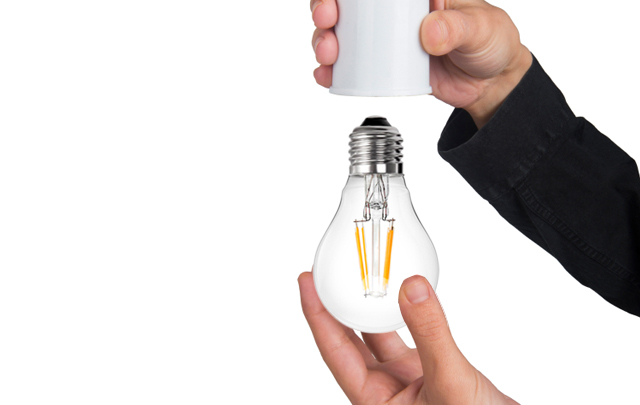Free shipping on orders over £50
TradeHURRY! SPRING SALE Now On! Get 10% Off Using Code KEEP10! Plus FREE SHIPPING On All Orders Over £50!
The Best Way To Change A Light Bulb
 Changing a light bulb is something that most of us take for granted. How hard can it be, right?
Changing a light bulb is something that most of us take for granted. How hard can it be, right?
Well, according to research, one in 20 British people don't know how to change a light bulb. If you can believe it, that's 3.2 million people in the UK that can't change a bulb. It sounds crazy, but it’s true!
Thankfully, Wholesale LED Lights is here to lend a helping hand in the form of a step-by-step guide.
Step 1: Turn Off The Power
Never attempt to change a light bulb with the power still connected. Remember, safety first!
Step 2: Allow The Bulb To Cool
Remember that incandescent light bulbs run very hot, so give them a chance to cool down before you start touching anything.
Fortunately, you won’t have this problem with LED light bulbs, as they produce very little or no heat.
Step 3: Use A Ladder
Generally speaking, light bulbs are found in hard-to-reach locations. This means it’s probably a good idea to use a ladder to replace them.
In the interest of safety, we don't recommend balancing on a chair that’s on top of a table!
Step 4: Remove The Old Bulb
The way you do this will depend on whether your bulb has a bayonet, screw or a push-and-twist fitting.
For bayonet mounts, and for GU10-type fittings, hold the bulb lightly but firmly, and gently push upwards whilst turning it anticlockwise until it comes out of the socket.
For screw fittings gently twist the bulb anticlockwise until it comes out.
Step 5: Insert The Replacement Bulb
Gently but firmly push the bulb into the socket and turn clockwise until you feel it lock into place.
Step 6: Switch On The Power
“Click”
Step 7: Dispose Of Your Old Bulb
- Incandescent and Halogen Bulbs – These types of bulb aren’t in any way recyclable, as to do so would be prohibitively expensive. As such, they should be placed into your general waste bin, ensuring they’re wrapped up to avoid injury in the event of breakage.
- CFLs (Compact Fluorescent Lamps) – Although there’s no current legislation to stop people disposing of these bulbs in their general waste, this really shouldn’t happen, as they contain poisonous Mercury. Therefore, they must be collected separately for disposal, ensuring that valuable parts of the lamps, such as glass and metal, are not lost. Every CFL carries an end-of-life recycling fee and you can find your local recycling point by visiting the Directgov website.
- Our LED light bulbs don’t contain harmful any substances, and are manufactured using 100% recyclable materials. Thus, you can dispose of them in your recycling bin, happy in the knowledge that you’ve caused no harm to the environment.
LEDs also have an incredibly long life-expectancy in comparison with their old-school incandescent and fluorescent counterparts. Their 50,000 hour life-span will mean that you won’t have to read this blog again for about 17 years!
For more information please contact our customer service team on 0116 321 4120 or send us an e-mail enquiry to cs@wled.co.uk.






 Search
Search


